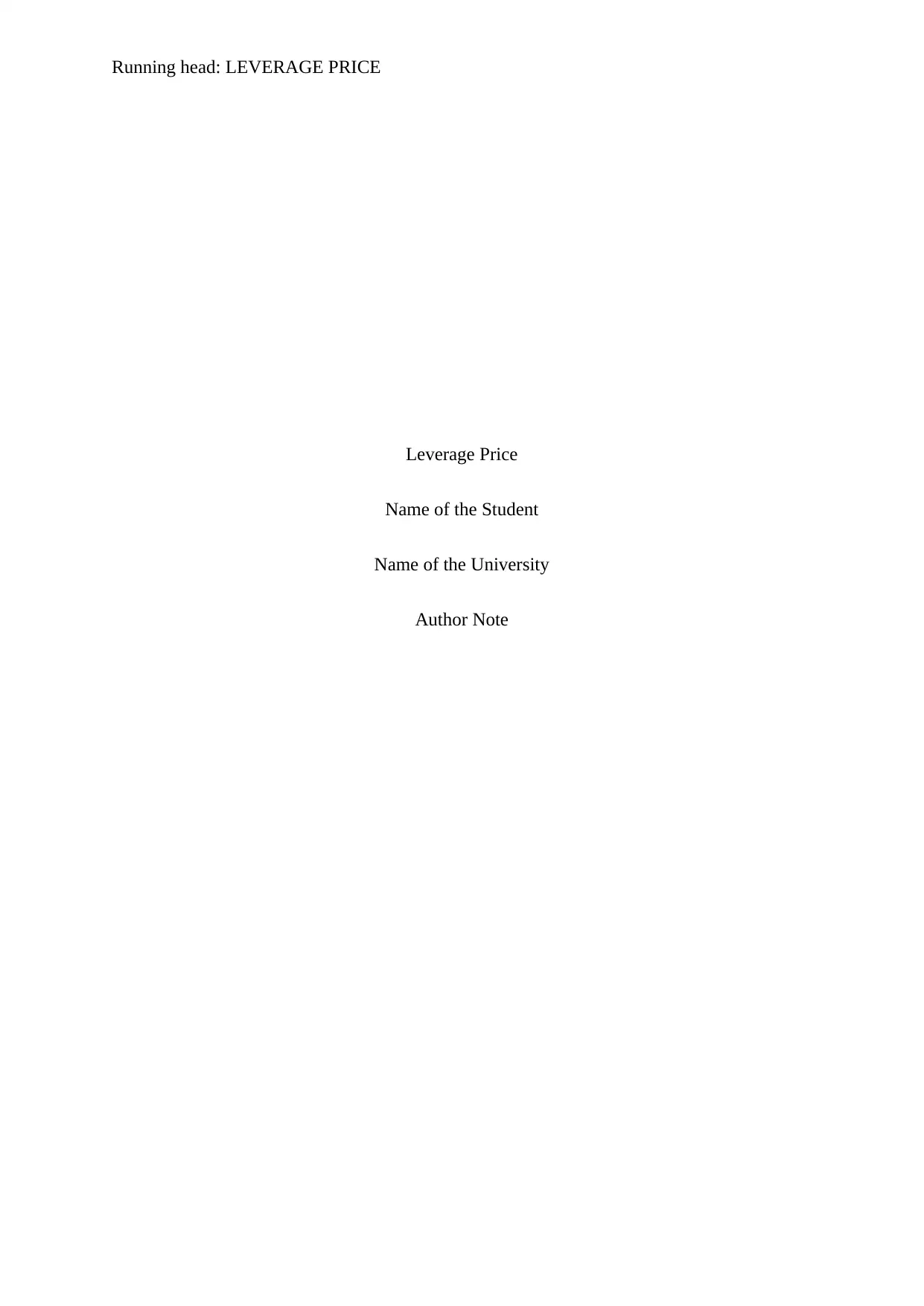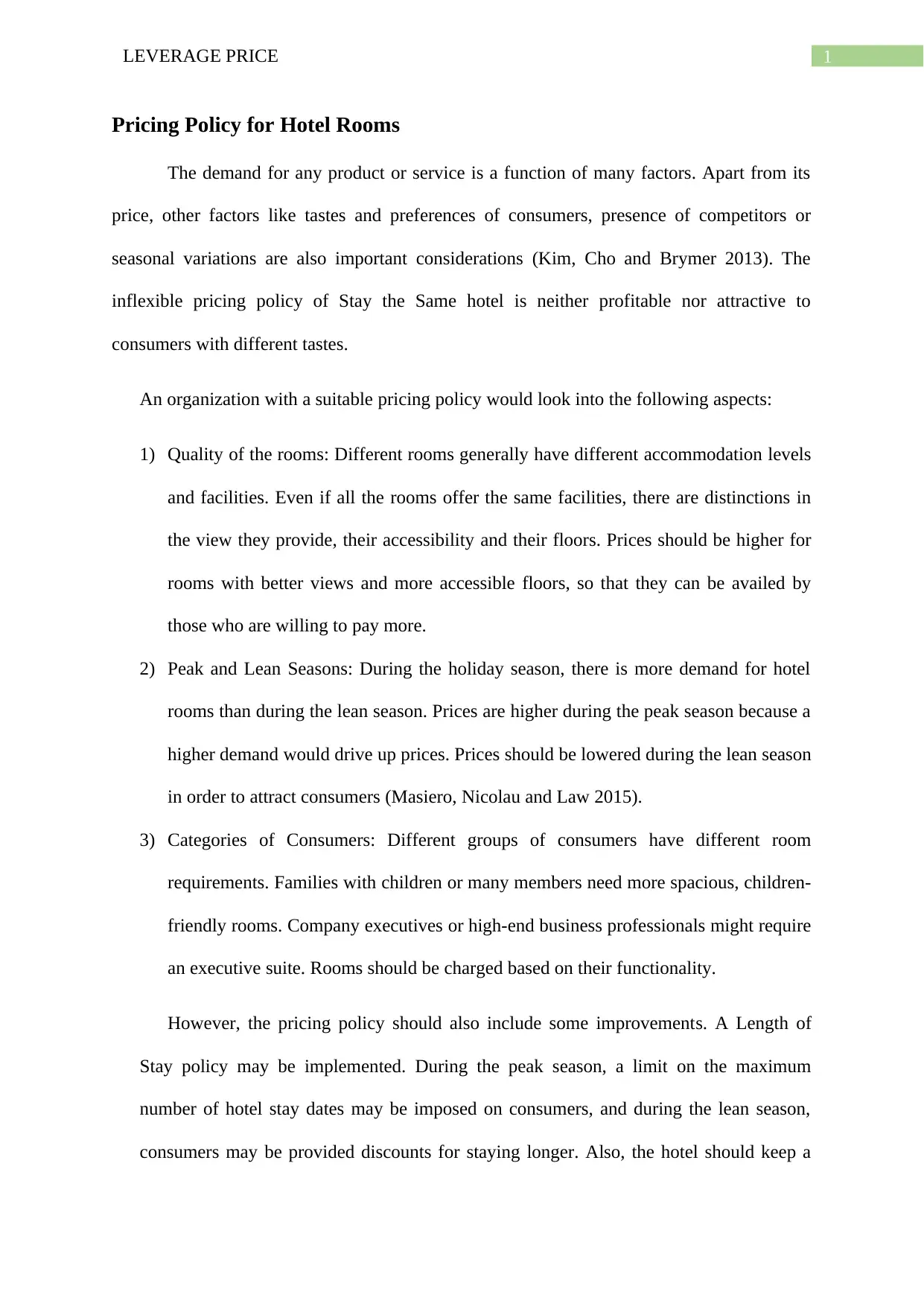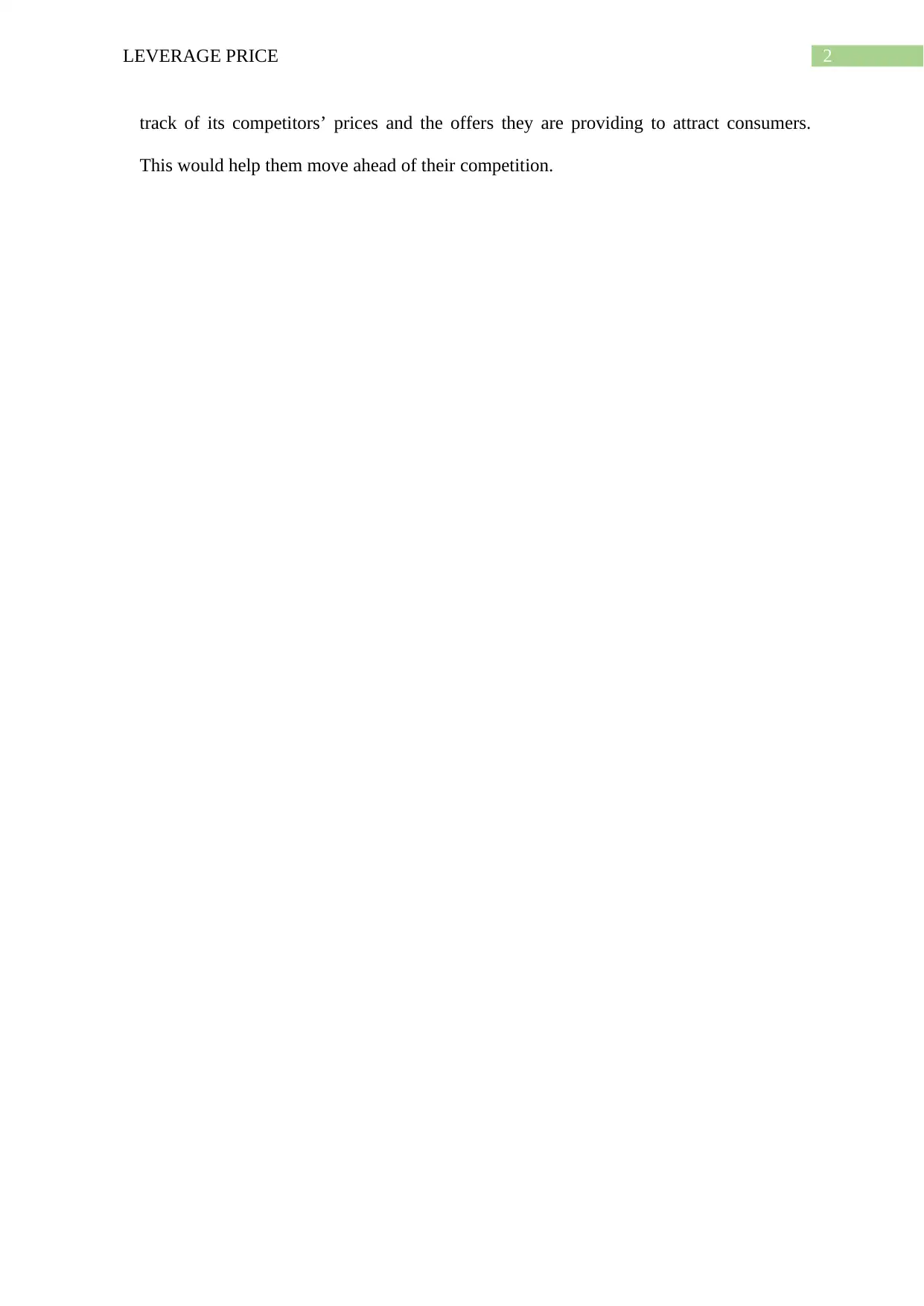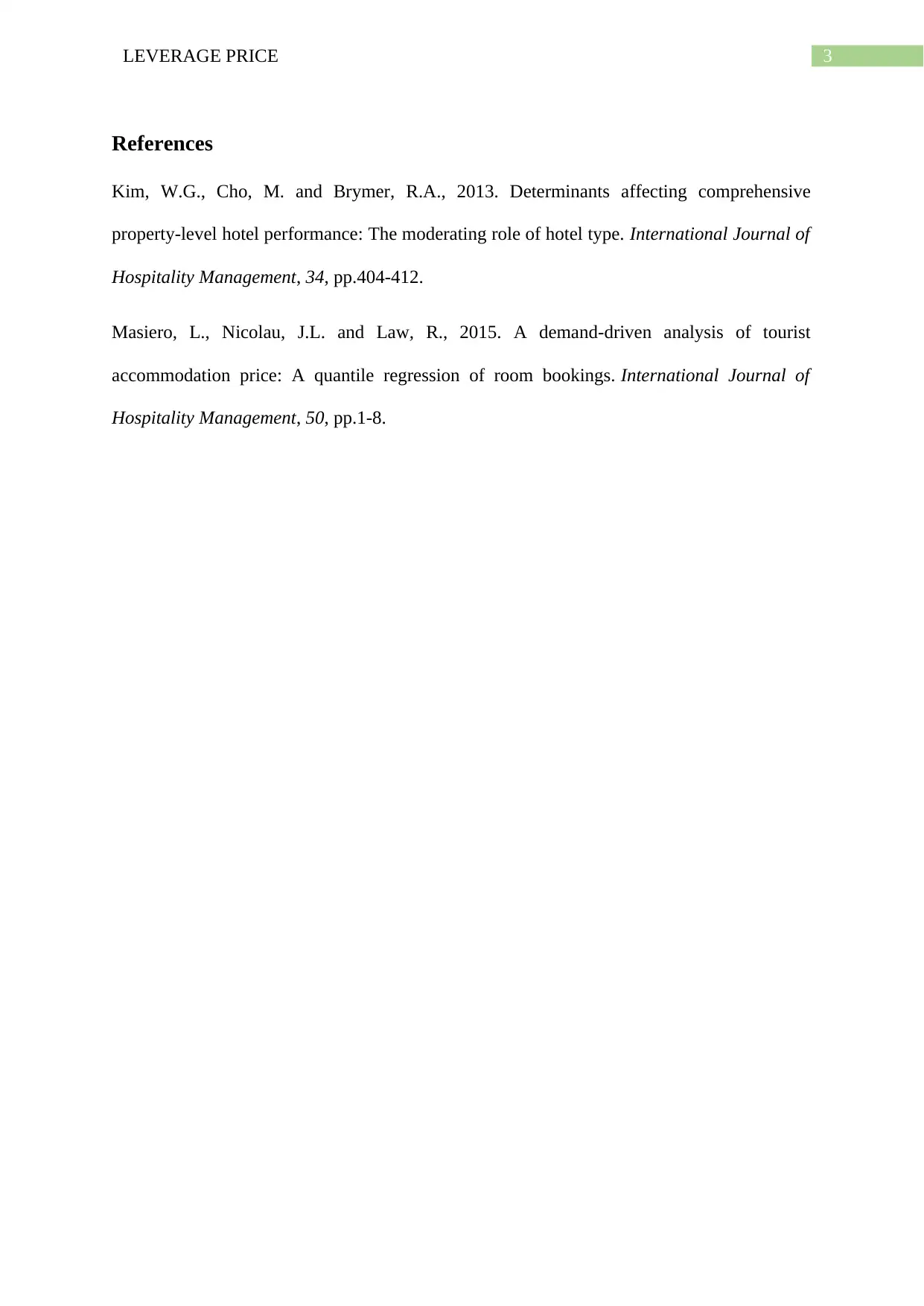Leverage Price: Hotel Pricing Strategies, Revenue Management Analysis
VerifiedAdded on 2022/11/18
|4
|454
|77
Discussion Board Post
AI Summary
This assignment analyzes the pricing strategies of the fictional 'Stay the Same' Hotel, which uses a uniform pricing approach for all its rooms, regardless of factors like view, accessibility, or demand. The discussion highlights the limitations of this approach, which fails to consider key pricing elements such as demand, competition, and customer characteristics. The solution suggests a more dynamic pricing policy that accounts for room quality, seasonal variations, and consumer categories. It proposes improvements like implementing length-of-stay policies and monitoring competitor prices to optimize revenue. The references provided support the analysis by exploring determinants affecting hotel performance and demand-driven price analysis.
1 out of 4





![[object Object]](/_next/static/media/star-bottom.7253800d.svg)